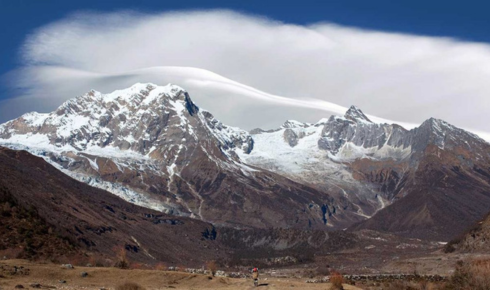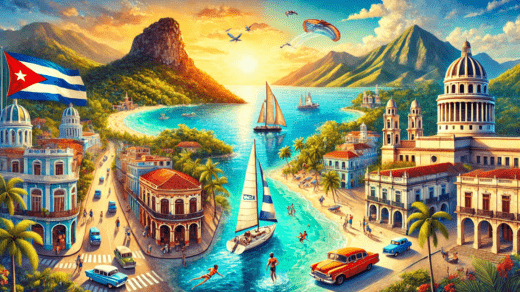Budgeting for the Manaslu Circuit Nepal is all about determining the different costs to expect on this adventure through one of Nepal’s most isolated and stunning areas. The total cost will vary, depending on the duration of your trek, where you stay, the method of transport, and if you decide to do a guided trek or to go solo. Perfectly organizing financially is the key to a hassle-free and joyful trip without any stress about money in between.
The trekking permits that are necessary to enter the Manaslu Restricted area can contribute to one of the biggest costs. They are the Manaslu Restricted Area Permit (RAP) and the Manaslu Conservation Area Permit (MCAP). If your trip passes through the Annapurna region travel you’ll also require an Annapurna Conservation Area Permit (ACAP). License fees are based on season and nationality, and may make up a substantial portion of your budget. These permits give a low-impact access and provide aid to community conservation and development.
The cost to get to and from the trailhead is another big one. The vast majority of trekkers fly to Kathmandu, Nepal’s capital (where international flights land). From Kathmandu, you can fly domestically or take a long bus or jeep ride to Soti Khola or Arughat, common jumping-off points for the trek. Flights cost time but add to the budget, while road travel costs less but may be long and bumpy.
Accommodation and food. The cost is largely determined by whether you use basic teahouses or more comfortable lodges. The teahouses on the Manaslu Circuit are generally simple, with basic rooms and shared bathrooms, but prices go up as you gain altitude because the supplies become harder to transport. Meals will mostly consist of local standbys like dal bhat, noodles, and soups, and the further up the trail you go, the more expensive they’ll get. Having snacks and energy bars on hand will help keep the cost of food in check and provide some energy on those long trekking days.
It’s highly recommended that you hire a guide and porter to stay safe, get an inside line on Nepalese culture, and take the load off your feet on the trail. Please note that guide and porter wages include their daily wage, food, shelter, and tips. This will add to your cost, but most travelers consider the support priceless, particularly in this less-visited, less developed area where access is limited. If you opt for independent travel, costs may be cheaper, though safety and convenience are also lower.
Equipment and gear are a front-loaded cost that many trekkers will have to consider. Quality hiking boots, cozy attire, a sleeping bag, trekking poles, and a solid rucksack are the indispensable items to ensure your trip is as comfortable and safe as possible. You only buy them once , but those can be money judo for your wallet. Renting gear in Kathmandu is another possibility, but it can restrict your options as well as your comfort.
Got some more in your pocket, Things like Travel insurance and a solid trekking insurance for high altitude as a must for an emergency. You will also have to consider tipping, souvenirs, costs of communication, and any unforeseen medical requirements. It can also add up with currency exchange fees and ATM withdrawal charges in Nepal.
In the end, we have covered how to budget smartly for the Manaslu Circuit Trek, which involves research, planning, and getting clear on your personal preferences and priorities. Once you factor in permits, travel, accommodations, food, guides, equipment, and insurance, you will be able to get an idea of what a realistic cost is, and budget accordingly. This planning ensures you can experience the stunning scenery, witness a vibrant culture, and engage in a lifetime experience of the Manaslu Circuit without a barrage of financial surprises.
Manaslu Circuit Trek summary
The Manaslu Circuit Trek is one of Nepal’s scenic off-the-beaten-path trekking trails. Looping around the 8th-highest mountain in the world, Mount Manaslu, this trek perfectly combines great scenery, cultural fascination, and a tough physical quest. At around 210 miles in length, the trail journeys through varying ecosystems, from subtropical forest to high alpine, climaxing at the tough Larkya La Pass at 5,160m. Unlike other more developed trekking routes, the Manaslu Circuit is still off-limits for independent trekkers and is a controlled area that demands special permits and guides to help preserve its delicate ecosystem and ancient cultures. This is a trip perfect for lovers of walking off-the-beaten path through remote villages inaccessible by road, pastures, bamboo forests, with the wonderful interaction with Tibetan and Gurung culture. Another sign needed is advanced preparation, as trekkers will encounter fickle weather, rough trails, and basic lodging. This preview gives a taste of the unforgettable trip awaiting you if you decide to discover this secret Himalayan treasure.
Getting Fit for the Hike
Mental and Physical Fitness. Both physical and mental fitness are equally important for the complete enjoyment and safety while completing the Manaslu Circuit Trek. Good stamina and strength are required to hike the trek’s long days over steep, uneven terrain. Being fit and active is vital, so begin preparing a minimum of 2-3 months before you go with cardiovascular exercise, i., running, cycling, swimming, etc, to build endurance. Leg, core, and back-focused strength training will help you manage large backpack loads and tough uphills. Weighted hiking can be a way to practice for the real thing and avoid injury. Yoga is also a great agility workout that can help you navigate rocky trails. They (if feasible)… There is also altitude training or hikes at high altitude to get your body used to thinner air.. The truth is that trekking at altitude requires a high level of cardiovascular health and strong muscles to reduce fatigue and prevent altitude sickness. Regular physical conditioning is not only going to increase your confidence but also enhance your overall trekking experience.
Permits and Regulations Required
The Manaslu Circuit Trek is in a restricted area in Nepal, so trekkers have to have special permits to get in. The two main permits are the Manaslu Restricted Area Permit (RAP)1 and the Manaslu Conservation Area Permit (MCAP). Also, if your trek ventures into the Annapurna region, you need an ACAP permit. These permits are used to manage tourism, protect the natural environment, and encourage local communities. Itineraries must be arranged through a registered trekking agency to obtain the necessary permits, and independent trekking is not allowed — groups must be at least two persons accompanied by a licensed guide. The permits are to be carried with you during the hike and are routinely inspected at several points on the trail. Fees vary by season and nationality, but typically comprise a good portion of the trek’s expense. Following these rules helps to maintain the integrity of the unspoiled ecological environment of Manasalu and the safety of trekkers, as well as fosters sustainable yet responsible tourism.
Best Time to Trek Manaslu Circuit Trek
The season you select for the Manaslu Base Camp Trek will determine the quality of your trekking experience. The best trekking seasons are the spring (March to May) and autumn (September to November). The spring season will be a perfect time to view the glowing rhododendron forests, temperature will be mild and good for hiking. Autumn sees clear skies, stable weather, and lovely temperatures, making it the preferred season for trekkers. Both seasons experience lower precipitation and less risk of blocked trails. Wet weather may cause heavy rain, landslides, and slippery trails that can be hazardous and spoil the beauty of the trek. Winter trek is doable but difficult because of freezing temperatures and snow, and the absence of services along the trek. Weather & Trail Conditions on the Manaslu Circuit. Picking the optimal time of year to hike can add huge safety and fun to enjoying the awesome scenery and cultural trekking the Manaslu Circuit provides.
Finally, What to Pack and Gear Advice
What you bring along is crucial to your comfort, safety, and success on the Manaslu Circuit Trek. The journey passes through different climates and elevations, so layers are critical. Begin with moisture-wicking base layers, layer on insulating mid-layers like fleece or down jackets, and top it off with waterproof, wind-resistant outer shells. Durable, waterproof hiking boots with ankle support are a requirement, as the trails can be rugged and slippery. A sleeping bag that is rated for -10°C or colder will be an investment when mountain sleeping is cold. Hiking poles can prevent joint pain, knee strain, and ease pain from common forms of arthritis. And please don’t forget the essentials like a headlamp, water bottles with purification tablets or filters, sunglasses, high SPF sunscreen, medicines for altitude sickness; a compact medical kit is also a must. Pack all your kit into waterproof bags to keep it dry in rain, snow. Pack only what is necessary to minimize weight, strike a balance between comfort and mobility, and come prepared for changes in weather and trail conditions.
ACCLIMATIZATION TIPS TO AVOID ALTITUDE SICKNESS
Altitude sickness is another problem that you might encounter on the Manaslu round Trek as the elevation goes higher than 5,000 meters. Correct acclimation is essential to prevent severe illness such as Acute Mountain Sickness (AMS). Slow progression and giving your body time to acclimate to lower oxygen levels can prevent symptoms like headaches, nausea, lightheadedness, and fatigue. Many itineraries incorporate days of rest at villages such as Samagaun or Dharapani, where trekkers can ascend during the day and then sleep lower. Good hydration and nutrition support acclimatization. Alcohol and heavy exercise are best avoided in the first few days at altitude. It’s important to be able to recognize early symptoms — if they do, you will need to descend promptly. Some trekkers use acetazolamide (Diamox), under medical care, to hasten acclimatization. Keep a personal pulse oximeter to monitor oxygen levels. Acclimatization is not merely an issue of staying well — it will also make your trekking experience a whole lot better by boosting energy levels and improving mental alertness, which will in turn make your trek more enjoyable and safe.
Where to Stay and Eat on the Trail
At the Climb Manaslu, lodges are mostly teahouses or rather, simple guesthouses operated by local families. These offer simple hotel rooms with beds, blankets, and often shared bathrooms. Hot showers are available at some higher fees and are limited in supply at altitude. The facilities are basic but cosy and welcoming. Food choices range from typical Nepali dishes like dal bhat (rice and lentils), soups, noodles, and momos (dumplings). Western favorites such as pasta and omelets are also featured at most restaurants. Costs do generally rise with altitude, as accessing food and water becomes more difficult. Staying fed and hydrated is crucial, so take more snacks with you, like energy bars or nuts. You can purify the water using tablets or a filter. Most teahouses have charging facilities for electronics, though for a fee, and power outages are common. You will need to carry cash with you, as there are no ATMs along the route. Adopting local food and hospitality will further add to the cultural diversity of your trek.
Guide, Porter from Nepal: Benefits and costs
Since the Manaslu Circuit Trek is a ‘restricted’ trek, you are required to be at least two visitors and also a guide and porter for security, comfort, and to ensure a deeper cultural interpretation. Guides receive training in how to deal with difficult terrain, permits, and emergencies. They offer insights into local traditions, historical background, and nature that will enhance your experience. And while you use a backpack, heavy gear is hauled by porters, so you can enjoy a comfier hike free of a heavy load and reduce fatigue, a boon on steep climbs and long days. The prices differ based on season, agency, and quality of service, but usually include wages, food, staying in a tent, and some extra tips. You also contribute to the local economy and sustainable tourism by hiring local guides and porters. Although some trekkers may prefer to carry all of their gear, hiring the support of a guide and a few porters is strongly recommended for the Manaslu Circuit’s isolated and challenging terrain. It is what makes your hike safer, an easier acclimatization, and the hike more enjoyable.
Dealing with the Weather on the Manaslu Trek
The weather in the Manaslu area is very unpredictable and varies greatly according to season and altitude. The prime trekking seasons, spring and autumn, tend to provide stable weather, although hikers may experience surprise rain showers or snowstorms, especially around the high passes. The monsoons dump heavy rains, making it easier to get trapped in landslides, for trails to get slimed over, and for visual enjoyment to be slim. The winter months remain cold, with major high passes covered in snow, making the area less accessible and necessitating specialised equipment. The nights may be cold, while the days will be warm, and so trekkers should be prepared to dress in layers. Warm and waterproof clothes to help protect from the showers and strong Himalayan wind. If you keep track of weather news, you can plan your day trek. It’s good for safety to be flexible and to be ready to change your plans based on the weather. Good kit, awareness, and patience are vital to negotiating this aspect of the region’s weather and to ensure you enjoy a successful trek.
Manaslu Budget and Cost-Saving Tips
How to budget for the Manaslu Circuit Trekking? Understanding the larger costs and ways to control them. Permit fees and guide/porter will be fixed regardless, and will save you money! Bus, jeep, and flight also for transportation to and from the trailhead can also be assigned depending on the desired budget and schedule. Accommodation and food prices rise with altitude; sleeping in basic teahouses and eating local fare can cut costs. Those bagged bites could save you from the temptation of expensive teahouse fare. Renting gear in Kathmandu rather than purchasing new can be cost-saving, but it is worth investing in quality for your comfort and safety. Group travel means that the costs of guides and porters can be shared. Booking guides and permits through a reputable local agency is usually a good way to avoid scams and unaccountable fees. Have some cash, even if you end up pulling it from an ATM, you never know when you will need it for emergencies, tips, or unforeseen expenses. Invest a little step in budgeting, and you won’t have to worry about anything during your trek, and instead, spend more time fully experiencing the magnificent Manaslu adventure.
How much does a guide cost for the Manaslu Circuit Trek?
Manaslu Mountain Guide cost is normally $25 to USD 35 per day, including their salary, food, accommodation, TIMS, gear, and insurance, depending upon season, experience, and trekking company. This is the daily quota for which the guide is paid, including food, lodging, and sometimes insurance. And bring cash for an end-of-trek tip, which is traditional and generally around 10-15% of the guide fee. A guide is compulsory on the Manaslu Circuit due to it being a restricted area, they assist in guiding on tricky terrain, obtaining permits, and sharing cultural insights. Many trekkers also hire porters, who charge lower fees, usually around $15 to $25 a day, to lug burdensome backpacks.
What is the cost to climb Mount Manaslu?
An ascent of Mount Manaslu – the world’s eighth highest peak at 8,163 meters is a serious, costly expedition ($30,000 to $50,000 or higher). The price includes permits and guide and Sherpa support, equipment, logistics, travel, insurance, and contingency costs. The Nepalese government demands a substantial permit fee (as much as $8,000 per climber), making it one of the more expensive peaks to climb. The ascent is only for the very experienced and requires months of preparation. The majority of climbers join commercial expeditions run by professional companies that arrange acclimatization programs, fixed ropes, oxygen, and medical help.
What is the cost to hike Manaslu Tsum Valley?
A 13 to 15-day trek in the Manaslu Trekking—the beautiful, culturally rich sub-region of Manaslu—commonly costs $1,200 to $1,800. This fee covers permits (Manaslu Restricted Area Permit and Conservation Area Permit), guide and porter, room and board. The Tsum Valley is less touristy and more remote, so this can escalate expenses somewhat in comparison to well-trodden treks. It is obligatory to travel with a licensed guide, and the total cost is determined by the trekking company and the season.
How to Get Prepared for the Manaslu Circuit Trek?
Manaslu Peak” The Manaslu Circuit Trek is a classic tea-house trek with the added attraction of a crossing of the Larkya La at 5125 meters. Begin training about two to three months ahead by increasing cardiovascular endurance with running, cycling, or swimming, and developing muscle strength with hiking, squats, and core work. Hike with your pack fully loaded to acclimate your body to trek conditions. Get permits through a registered agency, as solo trekking is not allowed. Organize a licensed guide, an optional porter. Buy solid trekking gear like boots, layers, and a good sleeping bag. Read about preventing altitude sickness and how to acclimatize. Include rest days in your schedule to acclimatise. Get ready for primitive lodgings, fickle weather, and no frills facilities. Lastly, purchase travel insurance that covers high-altitude trekking to safeguard against emergencies.




